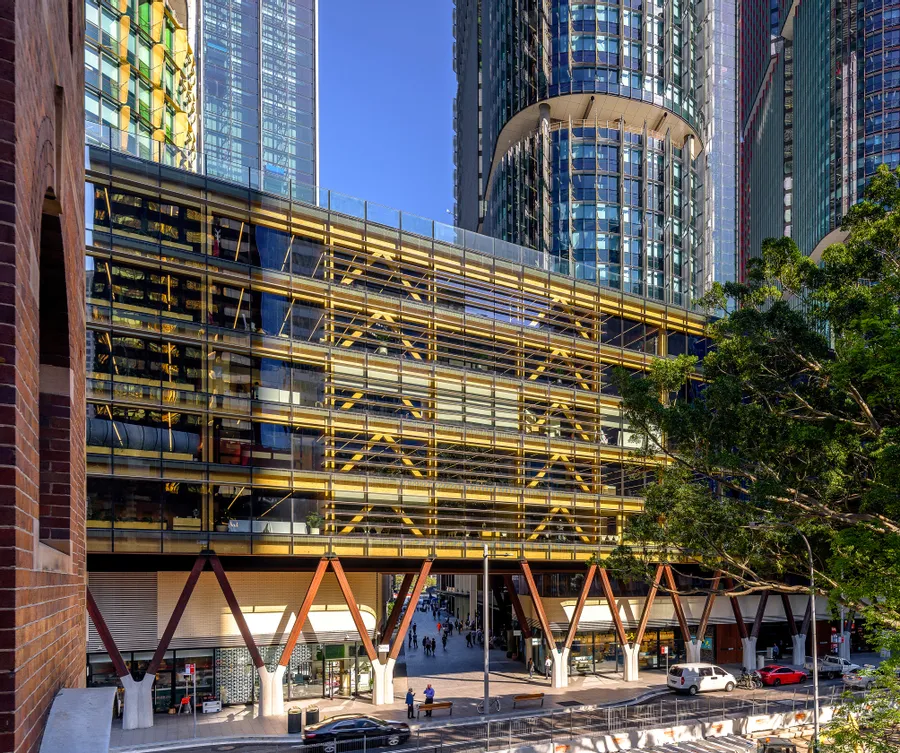Designing the future with sustainable timber
Under the theme Designing the Future with Sustainable Timber, we are bringing together a range of stakeholders to promote the use of wood in construction in general and certified wood in particular.
Designing the future with sustainable timber
1 January 2023 Campaign
Across the world, the architecture community is embracing solid and engineered wood to deliver high profile, award winning projects and everyday designs - from houses, schools and hotels to restaurants, theatres, supermarkets and swimming pools.
Under the theme Designing the Future with Sustainable Timber, we have brought together a range of stakeholders to promote the use of wood in construction in general and certified wood in particular.
Why build with wood?
Wood is great for the planet. Wood is THE renewable building material. Compared to concrete, steel, cement and glass, wood requires less energy in production and rather than emitting carbon, it stores it.
 International House
International House
Wood in buildings is healthy. Wood has a positive influence on the indoor climate and therefore on the well-being and health of the people who live or work in the building. What's more, wood is an excellent heat and humidity regulator. Walls made of wood breathe; they control the humidity of the surroundings.
Wood allows creative designs. Wood is strong, flexible and attractive, and easy to work, process and finish, making it ideally suited to creative and innovative designs. Every piece of wood has its own particular characteristics, because it is unique in terms of its grain, colour and lines.
Wood enables fast construction. A home made of wood is lighter than one made of conventional materials, so you can have smaller and simpler foundations, which means they are easier to build. Numerous elements manufactured in workshops simply need to be put together on the building site.
Importantly, an increasing number of building projects are now opting for certified timber, and both public authorities and private companies are choosing to work with wood and paper with a sustainable origin.
Make sure it is certified
While wood is a fantastic construction material, there is one vital consideration – is it certified?

PEFC-certified timber, whether it is solid wood or engineered wood such as CLT and glulam, comes from a PEFC-certified forest – a forest managed sustainably in line with strict international requirements.
This means that forest owners manage their forest in a way that provides us with timber and other forest products, while at the same time ensuring that the forest will be around for generations to come.
Certification matters, it not only demonstrates that wood used in construction is sourced sustainably, but that a positive choice has been made to design and build with a future for healthy forests in mind.
PEFC-certified timber and engineered wood products are readily available for construction projects from a wide range of global suppliers. Construction projects can even obtain PEFC Project Chain of Custody certification to demonstrate excellence in responsible sourcing.
Collaboration to improve sustainable sourcing
PEFC has teamed up with 2050 Materials to promote the wider use of certified products across the built environment and make the sustainable supply chain more accessible. The new online product platform is aimed at helping architects and construction professionals to source more environmentally friendly products, sustainability data, and technical information.

2050 Materials centralises all sustainability information into a single platform, enabling designers to save time and money at any project stage. The platform will be a key tool for anyone wishing to find certified suppliers and products quickly.
PEFC and 2050 Materials have common aims to drive generational change in choosing certified forest-based products at all stages of a construction project. Commonly used engineered timber products include CLT, glulam, and LVL, and are all available as PEFC-certified material with full chain of custody. Both organisations are committed to promoting a transparent and healthy circular economy.
Construction and the SDGs

When you think about construction and Sustainable Development Goals (SDGs), clearly Sustainable Cities and Communities (SDG 11) comes to mind - making cities inclusive, safe, resilient and sustainable.
Sustainable wood is the only renewable material on a large scale currently available. Used for centuries, it allows us to meet the housing needs for the growing number of urban dwellers with the lowest environmental footprint possible.
But what about Good Health and Well-being (SGD 3)? Wood in buildings is proven to have a positive impact on health, stress and blood pressure.
Decent Work and Economic Growth (SDG 8), Industry Innovation and Infrastructure (SDG 9), Responsible Consumption and Production (SDG 12): the constrution sector has a role to play in all of these goals, and that’s where PEFC certification can help. Designing with the Future with Sustainable Timber.
PEFC and the World Architecture Festival
In 2022, PEFC sponsored the World Architecture Festival (WAF) Best Use of Certified Timber Prize for the fourth time. This prize awards architects and project teams for using certified timber as the main construction material for buildings outstanding in sustainability, innovation, quality or aesthetics.
2022 World Architecture Festival
In 2022, eight fantastic buildings made the shortlist. While all these buildings have their use of certified timber in common, their style and purpose vary widely: from higher education and research to community spaces and sports facilities, to name only a few.
2021 World Architecture Festival
In 2021, the eight finalists included a research centre, a flexible gymnastics centre, a healthy workplace, a climate-friendly retreat and much more.
The World Architecture Festival and PEFC CEO Michael Berger revealed Scion Innovation Hub, Te Whare Nui o Tuteata by RTA Studio/Irving Smith Architects as the winner.
Located in New Zealand, Scion Innovation Hub proudly showcases PEFC-certified timber in a unique diagrid structure, requiring less material than traditional mass engineered timber buildings.